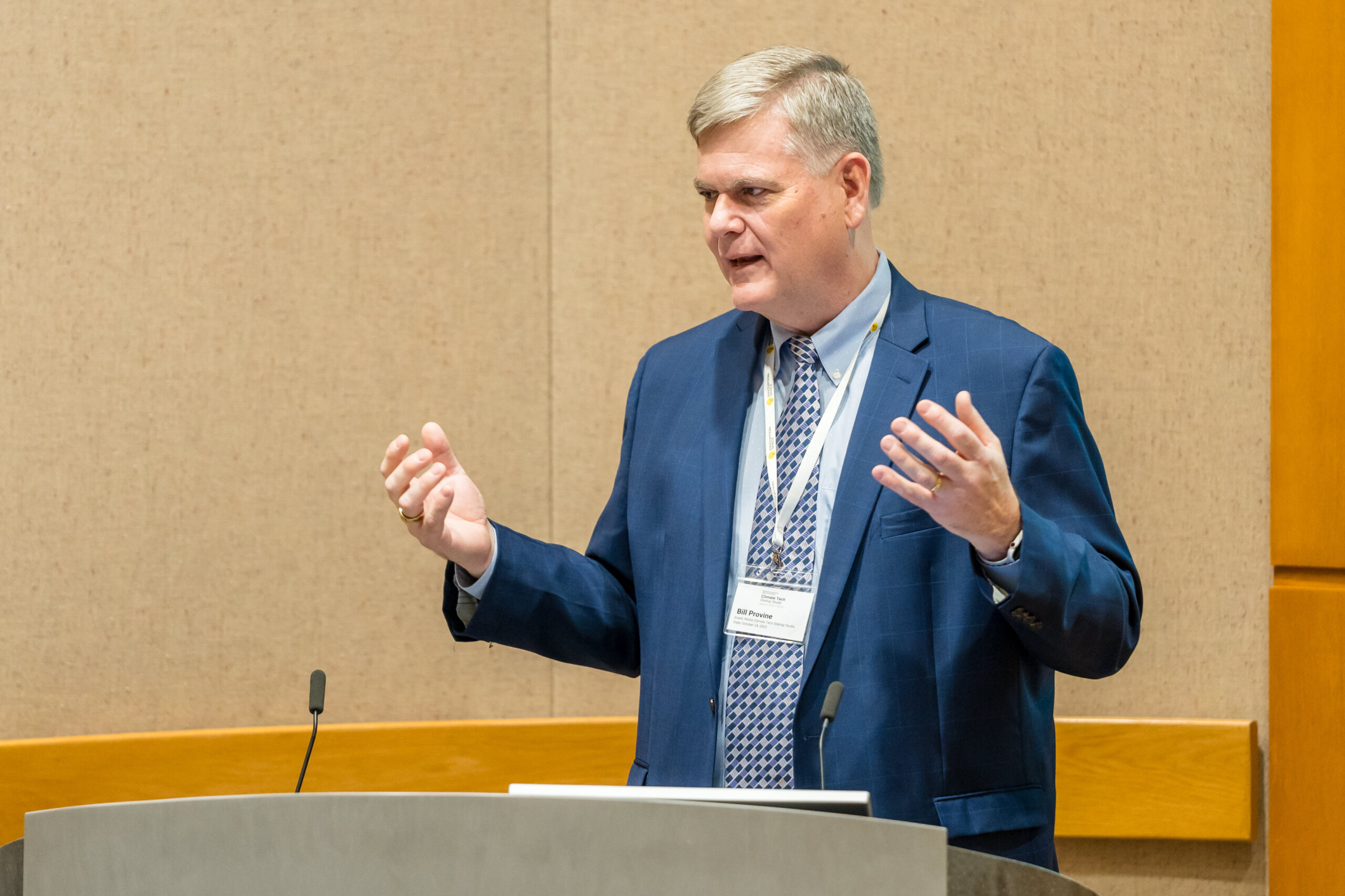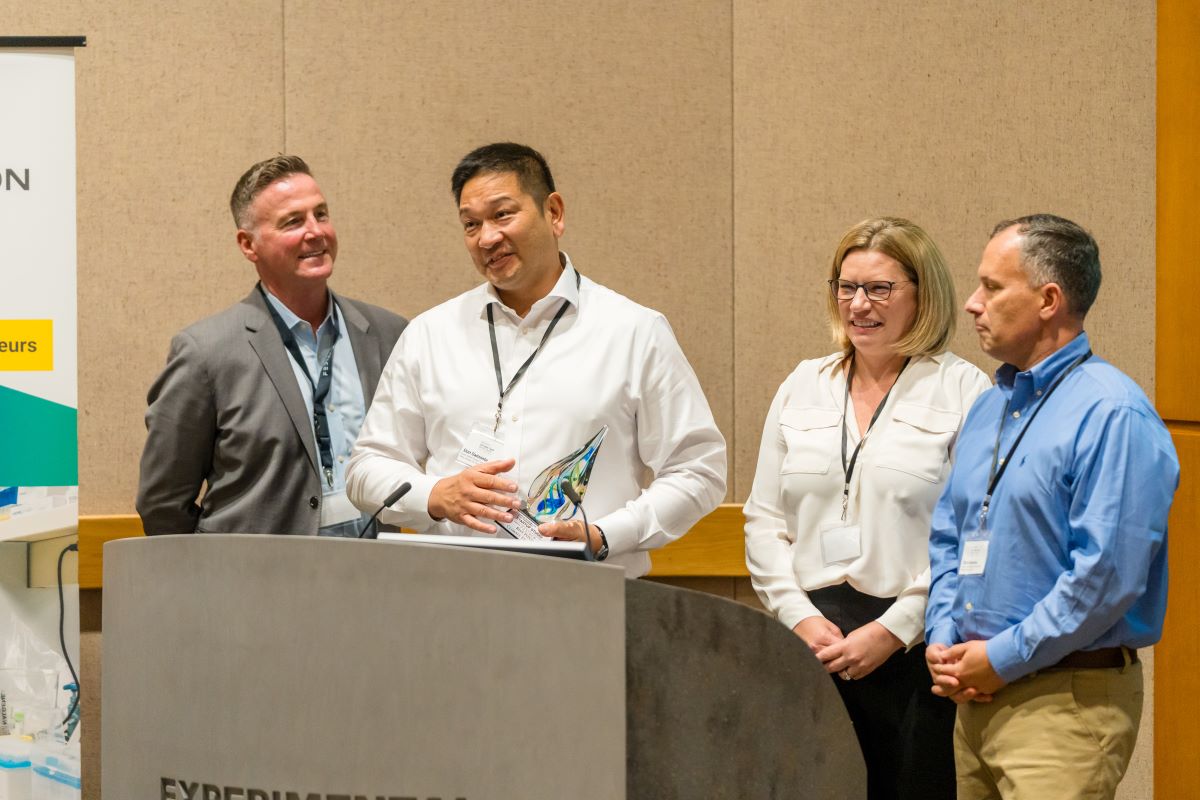As you might expect, NASA has tons of scientists who do a lot of research and development to engineer technology for its space missions.
Inevitably, not all of it winds up being used — not because it’s not viable and useful, it just doesn’t. Instead of letting technology potentially sit unused, NASA and other government agencies transfer some tech intellectual properties (IPs) to the public for use in more Earth-bound products.
But how does that technology get into the hands of entrepreneurs? One way is through programming where selected teams develop new products using available NASA IPs.
On Oct. 24, the Innovation Space — a public-private partnership between the State of Delaware, DuPont and the University of Delaware at the DuPont Environmental Station in Wilmington — hosted the NASA Climate Tech Startup Studio powered by FedTech. During this first official collaboration between NASA and the Innovation Space, entrepreneurs from all over the country were matched with NASA patents. They also teamed up to train and develop new climate-friendly products and services.
Behind the Startup Studio
It all came together with the work of DC-based FedTech. The private firm bridges the gap between federal entities with available deep tech IPs and clients, including universities and corporations, with lab researchers and entrepreneurs ready to develop the “lost” technology into new products. FedTech creates programs like the Climate Tech Startup Studio and supports startups on the long pathway to commercialization.
With NASA, the mission was to focus on participating in the building of regional ecosystems. Early on in the project, Delaware was identified by FedTech as the place to hold the showcase event, as well as to source entrepreneurs, coaches and mentors.

“We were looking at a space — not just a physical space, but a hub and a connector that could be a partner with us and our mission to find great entrepreneurs and advisors and mentors,” Robyn Brazzil, partner and head of programs at FedTech, told Technical.ly. “And that’s how we found Innovation Space, which really served all of those needs.”
John Boyer, a FedTech associate who was the project manager for the Climate Tech Startup Studio, scouted the area for corporate partners and event space last spring.
“The big draw for Innovation Space for us, at least, was that rather than hosting it at, like, a hotel conference center or something, Innovation Space not only has a great location, but they’re also sort of a natural landing spot for companies out of this studio and looking for a new place to work out [since] they have lab space,” Boyer said. “They have other programming themselves. They have great entrepreneurs-in-residence, where people have started companies, sold companies. They know what they’re doing, they can provide advice to other companies that are working with Innovation Space. It was kind of a perfect local partner, really.”
The main event
The search for entrepreneurs began late in the summer. By Oct. 24, the teams had taken their NASA IPs and were ready to pitch.
Five teams presented their climate tech startups before a panel of judges representing FedTech, the NASA Technology Transfer Program and the Innovation Space — plus a hybrid audience that included a live Zoom feed.
The winner, W² Climatech, addresses issues of ice buildup and barnacle and mold growth on wind turbines and cargo ships. Its coating solution leverages patents from NASA for unique molecules that create a coating with an ultrasmooth, low-adhesion and durable surface.
Second place went to Defuse Fire Solutions, whose technology addresses fires caused by lithium-ion batteries by wrapping individual battery cells in a flexible thermal barrier. The composite textile material is licensed from NASA.
The other teams were:
- AirLighten, an air quality monitoring solution using sensors to help cities and governments measure and address air pollution issues
- Gigapane, a super insulator material for windows
- Sawtooth Sensing, low-cost leak detection for the hydrogen economy
W² Climatech
The winning team is a trio that includes husband-and-wife Don and Kristina Samonte, as well as Chris Beronio, a longtime friend and Don’s roommate at the Naval Academy in the early ‘90s.
While there was no requirement that teams have any members in Delaware, Beronio lives in Middletown, while the Samontes live near Princeton, New Jersey.
Each brings something different to the table: Don is in finance, Kristina has a political communications policy background and Beronio’s resume includes mechanical and electrical engineering. They chose to apply as a team rather than individually.
“Chris is the one that brought the opportunity to Don and myself,” Kristina told Technical.ly. “Chris knew I’d just graduated from my MBA and that I was interested in doing some kind of startup. Don was an adjunct professor at Georgetown teaching investment banking. So he’s got what’s very important in business, which is the finance and business strategy angles, and then Chris has the tech, so I think we thought we would be a good team.”
The team landed on a chemistry IP and began the coaching part of the program, including weekly Wednesday evening virtual meets with the cohort involving group discussions and expert presentations.
In the beginning, the teammates planned to use the technology for an aviation industry product. But after a round of discovery interviews with people in that sector, they decided to pivot to one that wouldn’t involve as much regulatory red tape. Ultimately, they focused on keeping wind turbines free of ice.
“While we were doing that, we had a brief conversation with the inventor and also read that this could be used for hull fouling on the bottom of ships,” Don said. “So that’s why we came down to those two use cases. It was basically through discovery interviews with stakeholders, whether they were operators, engineers, developers, manufacturers and whatnot, just trying to find out what their pain points are and how we can apply that technology.”
In the end, their pivots and strategies got them the win at Climate Tech Startup Studio.
So what now?
“Our intention is to move forward with this,” said Kristina. “Right now, obviously, we’re heads down. We’re looking at the very earliest stage of product development. It’s one thing to be conceptual. … Now, you actually have to start executing. We’re beginning to move forward with the administrative and the legal aspects, and Chris is the overseer of the more technical product development aspect. And we’ve got to get the right minds and hire the right team. So there’s a lot of work to do.”







